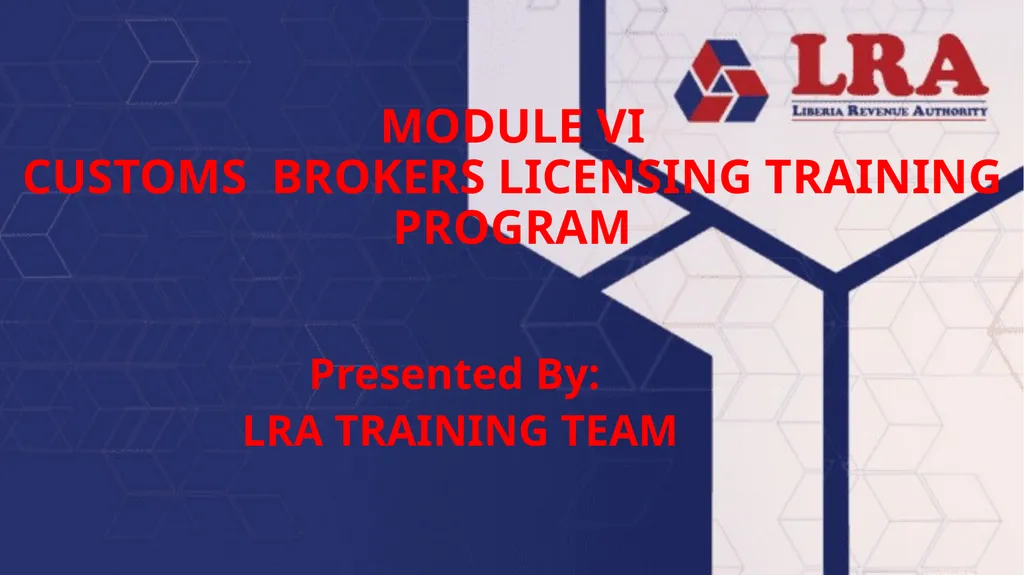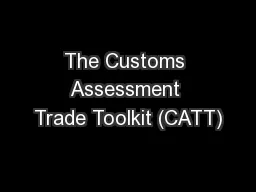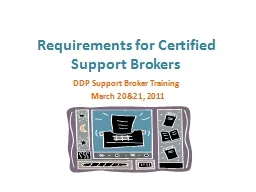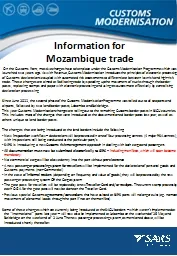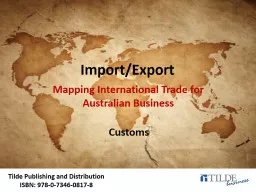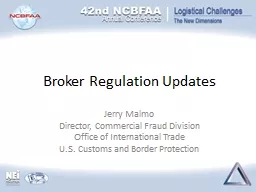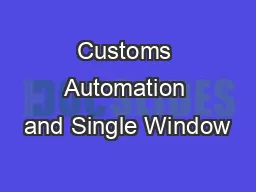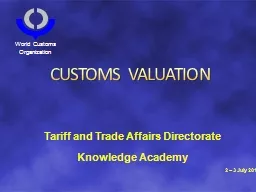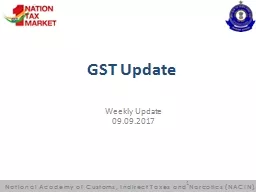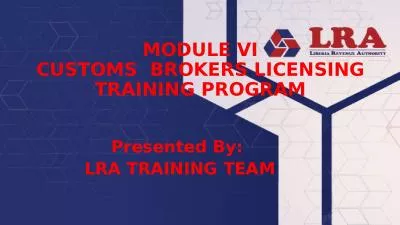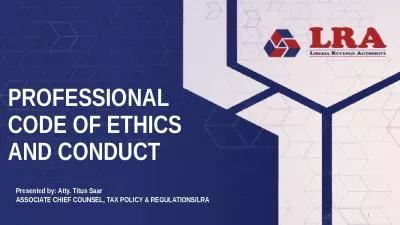MODULE VI CUSTOMS BROKERS LICENSING TRAINING
Author : mitsue-stanley | Published Date : 2025-05-24
Description: MODULE VI CUSTOMS BROKERS LICENSING TRAINING PROGRAM Presented By LRA TRAINING TEAM MUDULE VI HS CLASSIFICATION INTRODUCTION The participants in this course are entreated to do their utmost best to enhance their knowledge and skills to
Presentation Embed Code
Download Presentation
Download
Presentation The PPT/PDF document
"MODULE VI CUSTOMS BROKERS LICENSING TRAINING" is the property of its rightful owner.
Permission is granted to download and print the materials on this website for personal, non-commercial use only,
and to display it on your personal computer provided you do not modify the materials and that you retain all
copyright notices contained in the materials. By downloading content from our website, you accept the terms of
this agreement.
Transcript:MODULE VI CUSTOMS BROKERS LICENSING TRAINING:
MODULE VI CUSTOMS BROKERS LICENSING TRAINING PROGRAM Presented By: LRA TRAINING TEAM MUDULE VI HS CLASSIFICATION INTRODUCTION The participants in this course are entreated to do their utmost best to enhance their knowledge and skills to make them efficient and active participants and to contribute effectively to the conduct of the class session. This may lead to a successful pass in the Customs Brokers Licensing uniform examination. 2 INTRODUCTION On the other hand, participants who may not assert themselves proficiently in this module, could stand the risk of not passing the uniform examination and may fail to be licensed to practice as professional Customs broker. 3 OUTLINE Module objectives Background to Tariff Classification—Evolution Overview of the HS structure The structure of the HS—Liberia 2012 HS vs. CET 5. Overview of the General Interpretative Rules (GIRS) 6. The meaning of classification 7. Why classify using HS? 8. How to us the HS Module Objectives At the end of this module, participants should be able to: Define technical terms and Latin phrases used in the customs nomenclature Outline the evolution of customs nomenclature State the reasons for tariff classification Identify the uses of the Harmonized System Outline the structure of the Harmonized System 4 Module Objectives Cont. At the end of this module, participants should be able to: Compare and contrast Liberia 2012 HS Tariff Structure to that of the CET Identify the concept/principles of HS classification Outline the legal basis for tariff classification Identify relevant documents required for proper classification Correctly apply the GIRs to classify traded goods 5 SESSION I EVOLUTION OF THE HS NOMENCLATURE Session Objectives At the end of this session, participants should be able to: Out the important stage (dates) to the evolution of the HS Define key terminologies and Latin phrases use in the HS nomenclature Outline the goals and reasons for HS classification Outline the uses of the HS 6 The Evolution of Customs Nomenclature 7 Definition of key terms and Latin phrases 10 International trade is an exchange of goods between two or more countries. CET means common external tariff. Mutatis mutandis means with the necessary changes Inter alia means among other things Prima facie means at first sight Etc. =etcetera means and the others/and so forth Definition of key terms and Latin phrases Cont. Nomenclature means a systematic naming, or enumerating of all goods found in international trade along with international rules and
